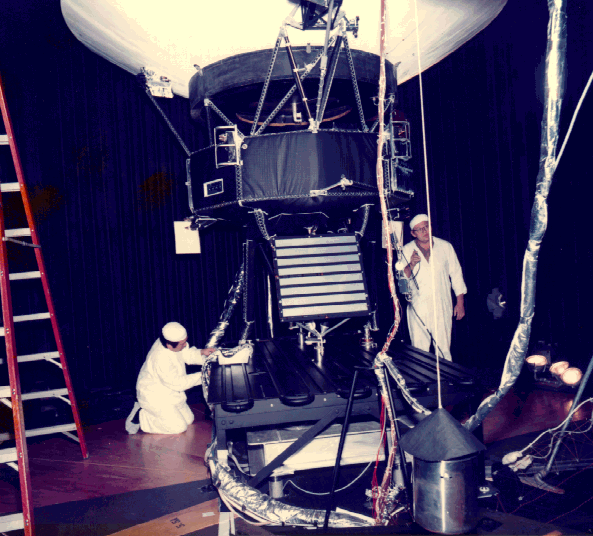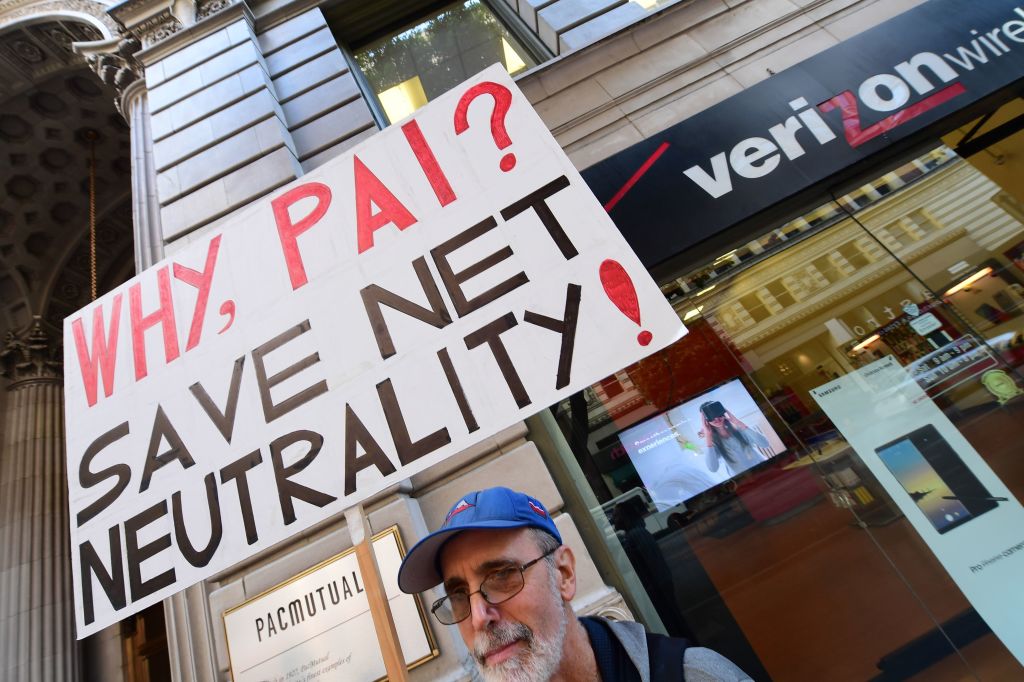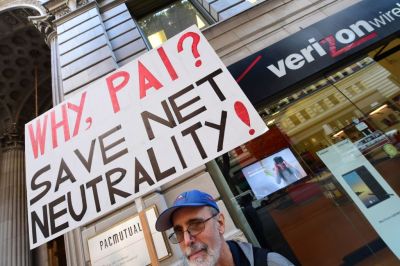Editor’s Note: We hope you enjoy this edition of Techne, a new newsletter by Will Rinehart dedicated to unraveling the complex forces shaping tech policy and innovation. To learn more, check out the introduction Will wrote back in March, and be sure to sign up here to receive future editions in your inbox.
Welcome back to Techne!
Notes and Quotes
- Rep. Cathy McMorris Rodgers and Sen. Maria Cantwell—chairs of the House Energy and Commerce committee and of the Senate Commerce committee, respectively—have unveiled the American Privacy Rights Act, a draft bipartisan privacy bill. Cantwell was the holdup, as I wrote last year, and McMorris Rodgers is retiring soon, so watch for movement on this issue.
- Maryland passed two tech bills on April 8: the Maryland Online Data Privacy Act, which will impose restrictions on the collection and use of personal data, and the Maryland Kids Code, which will prohibit certain social media, video games, and other online platforms from tracking minors or using a range of techniques as defined by the Federal Trade Commission as dark patterns. A new category, dark patterns are sometimes ill-defined since they include real harms with edge cases like auto-play, “Subverting Privacy Preferences,” and even online game currencies. My colleague Clay Calvert wrote about similar efforts in Florida.
- The Environmental Protection Agency has awarded $20 billion to help finance clean energy projects across the country as part of the Inflation Reduction Act (IRA). However, without reforms to speed up permitting, a third of the expected emissions reductions from the IRA could be lost.
- Engineers have confirmed that corrupted memory in one of the computers aboard NASA’s Voyager 1 has been causing the spacecraft to transmit gibberish.

- From the deck of a retired aircraft carrier along the eastern edge of San Francisco Bay, a team of researchers released tiny salt particles into the atmosphere. This pioneering outdoor trial is the first to attempt to combat global warming by enhancing cloud density to deflect solar radiation away from the planet.
- Programs capable of breaching the security of iPhones and Android phones for government hackers are currently valued at between $5 million and $7 million. The escalating challenge of hacking these products has directly contributed to a steep increase in their prices over the last few years.
- The AI Safety Fund initiated its first round of research grants to support independent, standardized evaluations of frontier AI capabilities and risks.
- The United Kingdom has a housing problem, so one big, bold plan is to raise Dogger Bank. Dogger Bank is a large sandbank off the coast of England that was once part of Doggerland, a landmass connecting mainland Europe and the British Isles. According to estimates, “raising Dogger Bank would cost £97.5bn, but would bring present value benefits of £622bn.”
- Economist Tyler Cowen and psychologist Jonathan Haidt debated the impact of social media on teen mental health on Cowen’s podcast. Religiosity is a mediator, as Haidt explained. “In Eastern Europe, which is getting more religious, the kids are actually healthier now than they were 10 years ago, 15 years ago,” he said. Haidt also spoke at AEI about his new book.
- Ben Reinhardt just released the Research Leaders Playbook, which lays out how to develop a massive scientific project that is “beyond the scope of a single academic lab, but doesn’t make sense for a startup.”
- SK hynix announced plans to build a $3.87 billion advanced memory packaging facility in West Lafayette, Indiana. Packing is the last step in making semiconductors and one step where the U.S. has limited facilities. To learn more, check out a policy paper I wrote about the full semiconductor supply chain late last year.
- The Biden administration’s latest budget proposal includes a provision that would tax rocket launches to pay for the work of air traffic controllers.
The Past and Present of Network Neutrality

Toward the end of this month, the Federal Communications Commission (FCC) will hold a vote to reinstate a set of rules for internet providers. Consisting of 434 pages and resembling a 2015 order passed during the Obama administration, the new rules are expected to pass given the makeup of the FCC. If enacted, broadband companies and other internet service providers will be prohibited from blocking and throttling content, as well as from engaging in paid or affiliated prioritization. In other words, broadband providers like Verizon FiOS and XFinity wouldn’t be able to charge or slow down content players like Google or Instagram a fee to run their service.
All to say, network neutrality is back.
For better or worse, I have a long enough memory and all the receipts to make the strong case that net neutrality is still a misguided notion. While some might try to convince you otherwise, what’s been at stake with net neutrality from the beginning is the FCC’s regulatory power. Congress has never passed a net neutrality bill, so the FCC has spent almost 20 years navigating through a maze of regulations and legal battles to firmly root the policy. Meanwhile, the courts have been skeptical. After all, agencies shouldn’t be able to stretch beyond their statutory authority.
But I also feel vindicated in a way, having stood out as a longtime critic of net neutrality. Even without the rules that advocates have said are necessary to protect competition and bring about innovation, Big Tech emerged. In other words, we got the benefits of innovation without strict net neutrality rules in place.
A very short history.
All of this started in 2005, when Comcast began throttling peer-to-peer technologies like BitTorrent (BT) and Gnutella. It took another two years for the topic to break out when an investigation by the Associated Press revealed that Comcast was slowing down file-sharing applications without disclosing the practice to its customers.
The facts of the inciting matter have never really been under dispute. Comcast didn’t implement a wholesale ban on BitTorrent. Rather the company applied a controversial traffic congestion method when users were uploading content. All network operators engage in network management practices, as my colleague Shane Tews explained recently. And Comcast was facing problems because BitTorrent was specifically designed to circumvent a common congestion mitigation technique. So Comcast applied a blunt management technique when BitTorrent overwhelmed upload queues. Eventually the two groups agreed to a solution.
However, the nascent internet advocacy movement interpreted Comcast’s throttling as evidence the company was willing to shut down anything that could compete with cable TV. It was the opening salvo in a war that Tim Wu had predicted in his seminal article, “Network Neutrality, Broadband Discrimination.” In the coming decades, he predicted that regulators would need to decide between internet giants and “the public’s interest in a competitive innovation environment centered on the Internet.” The article made a name for Wu, who has since become one of the strongest advocates in the Biden White House to rein in tech companies. The article also gave the policy regime a name that has since stuck: network neutrality.
The regulatory about-face.
Regulators also took notice of Wu’s article. In 2005, the FCC adopted a policy statement that was a near copy of the tenets Wu had been advocating. Consumers were entitled “to access the lawful Internet content of their choice,” “run applications and use services of their choice, subject to the needs of law enforcement,” and “to connect their choice of legal devices that do not harm the network,” because all of the actions furthered innovation.
Accordingly, after the throttling revelations were made public, the FCC issued an order censuring Comcast, starting the nearly 20-year regulatory battle over net neutrality. Comcast pushed back and took the agency to court, leading to the case Comcast v. FCC. The agency eventually lost in 2010 when the courts said that it lacked authority to determine the content delivery choices of internet providers.
Although it is now somewhat lost to history, Comcast at the time was largely worried about the FCC upending its terms of service. Comcast offered tiers of service and banned residential consumers from running servers. Running BT effectively made residential consumers into servers, which was disallowed under the consumer tier service. On top of this, Comcast had just introduced a telephone service that ran through its network, and the company was experimenting with protocols to ensure its quality. At the time, one network engineer I talked to wondered aloud if Comcast was using this method of congestion control to ensure its quality. It was secondhand information, but it was convincing given the facts.
After the courts struck down the censure and the FCC's enforcement authority the FCC came back with a 2010 order, which ratcheted up the restrictions and switched its legal tactics. The three-page policy statement from 2005 grew to 194 pages with the 2010 order. This time around, internet service providers had to be transparent, could not block a range of content and applications, and were prohibited from unreasonably discriminating in transmitting lawful network traffic. The resulting report and order was rooted in the notion that “broadband providers have the incentive and ability to limit Internet openness.”
What’s interesting is that this new line was almost a complete inversion of what Wu had laid out previously. As he noted,
Basic economic theory suggests that operators have a long-term interest coincident with the public: both should want a neutral platform that supports the emergence of the very best applications. However the evidence suggests the operators may have paid less attention to their long-term interests than might be ideal.
It wouldn’t be the last time that the goal posts moved.
The 2010 order was challenged by Verizon, again on perfectly reasonable grounds. Famously, Verizon and ESPN fumbled in 2006 when they teamed up for a branded phone. But they wanted to try again, a fact which was directly mentioned in the oral arguments of the case. It was widely surmised at the time that such a project might trigger a network neutrality violation, as this 2013 article from a respected telecom lawyer explains. When the courts did decide on the issue in Verizon v. FCC, the FCC again lost because of legal authority.
So, in 2014, the agency went back and redrafted the rules for a third time. At first, the agency was working on rules that would have followed guidelines laid out in the Verizon ruling. But a viral segment on the topic by comedian John Oliver and a surprise announcement from the Obama White House that blindsided officials at the FCC compelled the agency into taking a much harder line.
I’ll spare you the minutiae of communications law, which I have written about before, so here is the short of it: For decades, stretching back to the 1970s, the FCC regulated internet service and telephone service differently. Telephone service faced stringent rules under Title II while internet services were lightly regulated under Title I. The distinction is so fundamental that it was written into the Telecommunications Act of 1996. Indeed, just two years after its passage, Sens. John Kerry and Ron Wyden even wrote to the FCC to “make it clear that nothing in the 1996 Act or its legislative history suggests that Congress intended to alter the current classification of Internet and other information services or to expand traditional telephone regulation to new and advanced services.”
But with its 2015 order, the FCC did away with this distinction and placed internet services under Title II regulation to support modified rules. It was another about-face. Gigi Sohn—who was once nominated for a commissioner position at the FCC and is now a staunch supporter of the current rule change—was clear in 2007 that, “I don’t know anybody who is talking about going back to Title II … That is not what this debate is about.” The Electronic Frontier Foundation (EFF), another supporter of reclassification, warned years ago that the effort was sure to embolden the FCC and was probably a bad choice. But the EFF too had a change of heart.
The reason the FCC is again adopting Title II-based rules is because the 2015 order was pulled after Trump’s election and after Ajit Pai was selected as chair of the FCC. Pai spearheaded the Restoring Internet Freedom Order, which is current law. This order mandated transparency for internet providers, pulled all content restrictions from 2015, and then set up an agreement with the Federal Trade Commission to protect consumers. Pai got death threats for a regulatory change that was both in line with communications law and ensured that consumers were protected.
This move wasn’t a shot in the dark. Former FCC Commissioner Rob McDowell suggested this path in 2010, as did the Department of Justice in a 2007 filing. Personally, I think what the DOJ said back then is still true: “The FCC should be highly skeptical of calls to substitute special economic regulation of the Internet for free and open competition enforced by the antitrust laws.” Antitrust enforcers are the best equipped to protect innovation and consumers, so why not let them?
And it bears repeating: Even without these rigid guidelines, Big Tech came into being. Innovation thrived without the need for strict enforcement of net neutrality rules.
What’s fascinating looking back on this history is that network neutrality has never been a fixed policy. The goal posts were constantly shifting and expanding. In the end, this battle was never about protecting consumers—they were always protected by the antitrust authorities. Rather, net neutrality has always been a battle about the limits of agency action.
But zooming out, I see net neutrality as one instance of a shifting landscape in the politics of technology. We are experiencing the birth of what we might call filter politics. Echo chambers, filter bubbles, Cambridge Analytica, Hunter Biden’s laptop, deplatforming, platform bias, cancel culture, and, yes, network neutrality are all about filtering, about information being withheld from the attention of other parts of the system. Our politics will have to come to terms with these profound adjustments in the coming years.
Until next week, when I will tackle the new privacy deal,
🚀 Will
Research and Reports
- According to new research, Large Language Models (LLMs) are effective at efficiently pricing goods, and “collude in oligopoly settings to the detriment of consumers.” The FTC is already suing landlords for their use of a pricing algorithm to set rental prices, so this research speaks to a live legal issue.
- Zachary Liscow of Yale Law School just published an extended working paper on infrastructure permitting. It finds that “permitting is slow, infrastructure is expensive, and environmental outcomes are not particularly good.” Check out the section on reforms, it is interesting.
- A systematic trial demonstrates that debating OpenAI’s GPT-4 model can decrease the belief in conspiracy theories.





Please note that we at The Dispatch hold ourselves, our work, and our commenters to a higher standard than other places on the internet. We welcome comments that foster genuine debate or discussion—including comments critical of us or our work—but responses that include ad hominem attacks on fellow Dispatch members or are intended to stoke fear and anger may be moderated.
With your membership, you only have the ability to comment on The Morning Dispatch articles. Consider upgrading to join the conversation everywhere.